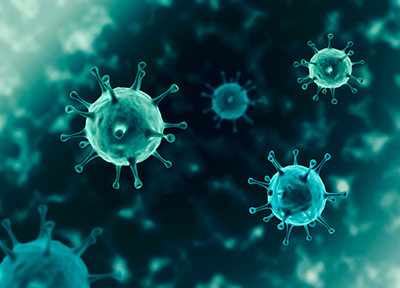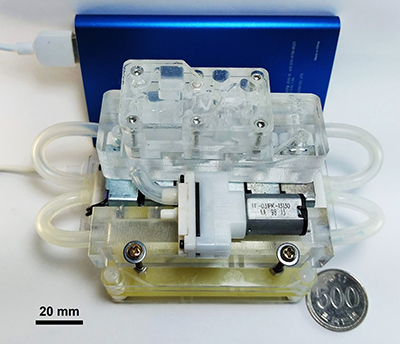FOR IMMEDIATE RELEASE
“Highly Effective Detection of Exosomal miRNAs In Plasma Using Liposome-Mediated Transfection CRISPR/Cas13a”
ACS Sensors

Most cancer diagnostic techniques rely on uncomfortable and invasive procedures, such as biopsies, endoscopies or mammograms. Blood samples could be a less unpleasant option, though only a few forms of the disease can currently be diagnosed this way. But now, researchers reporting in ACS Sensors have developed an easy-to-use method that can detect small amounts of cancer-related molecules in exosomes in plasma and effectively distinguish between malignant and benign samples.
Exosomes are small vesicles that pinch off from a host cell, carrying cargo, such as nucleic acids, lipids and proteins, inside. This means that they provide a window into the condition of the cell they originated from. Accordingly, the unique intracellular environment of cancerous cells will be reflected in their exosomes through biomarkers such as micro RNAs (miRNAs). These are very small nucleic acids, only a few nucleotides in length, that regulate protein expression in cells and can become dysregulated in tumors. Therefore, it’s possible that a blood test could someday detect cancerous cells simply by targeting these exosomal miRNAs.
But quantifying miRNAs has been difficult because they are present at very low levels in exosomes, requiring laborious processes that can introduce contamination and report unreliable results. So, some researchers have analyzed RNA and proteins in vesicles with the gene-editing tool CRISPR. But Hua Gao, Kaixiang Zhang and colleagues wanted to develop a way to detect the small numbers of cancer-related exosomal miRNAs using a different CRISPR system with a unique RNase activity that was sensitive, reliable and effective.
To create the detection method, the team designed a CRISPR/Cas13a system to cut apart a fluorophore and quencher-labeled reporter molecule, then packed it into a liposome — essentially a manufactured version of an exosome. When the two types of compartments fused together, the CRISPR cargo would then interact with the exosomal genetic material. If the target miRNA sequence was present, the Cas13a protein became activated and cut apart the reporter molecule, producing a fluorescent signal. In these experiments, the team targeted miRNA-21, which is involved in the development of several diseases, including breast cancer. The method successfully detected this miRNA within a mixture of similar sequences with high sensitivity. In other experiments, the researchers tested the method on a group of exosomes from healthy human cells and groups derived from breast cancer cells. The system consistently differentiated the cancer-related exosomes from those derived from healthy cells, showing it could be useful as a cancer diagnostic. The researchers say that this method has the potential to make cancer diagnosis and monitoring quicker and easier by analyzing blood samples.
The authors acknowledge funding from the National Natural Science Foundation of China, the Postdoctoral Science Foundation of China, the Programs for Science & Technology Innovation Talents in Universities of Henan Province, and Outstanding Young Talents in Henan Province.
###
The American Chemical Society (ACS) is a nonprofit organization chartered by the U.S. Congress. ACS’ mission is to advance the broader chemistry enterprise and its practitioners for the benefit of Earth and all its people. The Society is a global leader in promoting excellence in science education and providing access to chemistry-related information and research through its multiple research solutions, peer-reviewed journals, scientific conferences, eBooks and weekly news periodical Chemical & Engineering News. ACS journals are among the most cited, most trusted and most read within the scientific literature; however, ACS itself does not conduct chemical research. As a leader in scientific information solutions, its CAS division partners with global innovators to accelerate breakthroughs by curating, connecting and analyzing the world’s scientific knowledge. ACS’ main offices are in Washington, D.C., and Columbus, Ohio.
To automatically receive press releases from the American Chemical Society, contact newsroom@acs.org.
Note: ACS does not conduct research, but publishes and publicizes peer-reviewed scientific studies.







